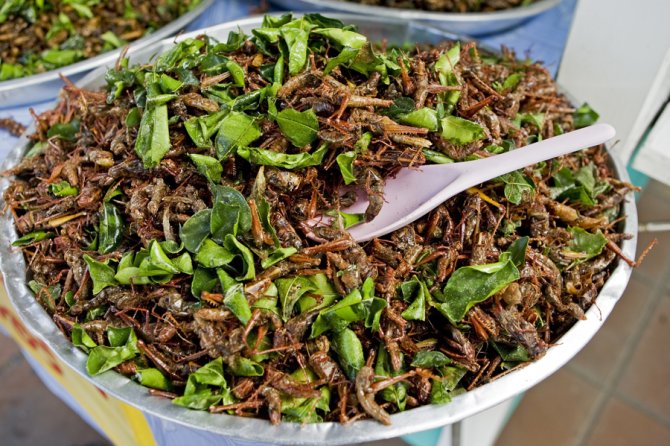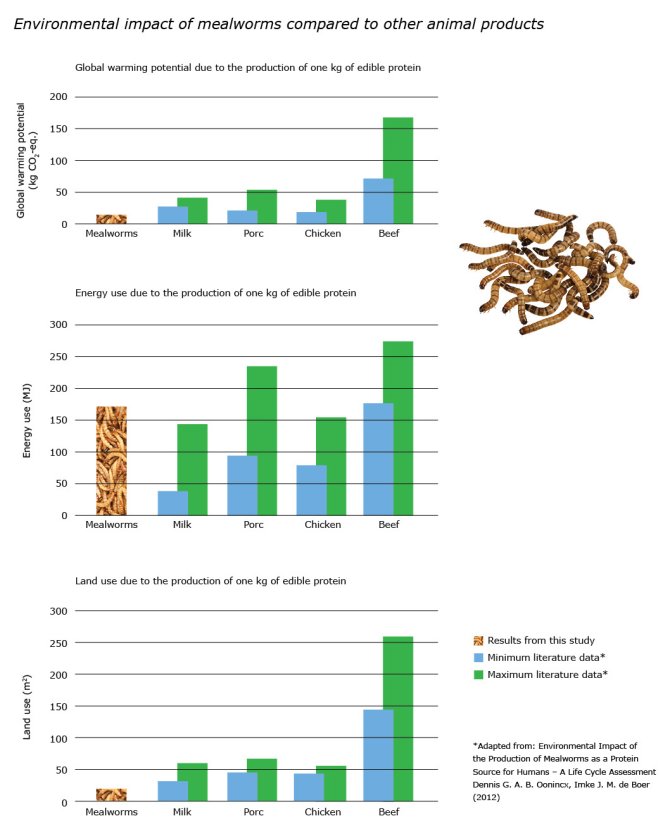Insects as human food
Seventy percent of the world’s agricultural land is already directly or indirectly dedicated to meat production. With a growing world population and increasingly demanding consumers, can we still produce sufficient animal protein in the future? Urgently we need to identify alternative protein sources, and insects have great potential in contributing to global food security.
Insects are increasingly considered for another benefit they offer – as a source of animal protein. With an average of 80 kg of meat per year, Dutch consumers eat an amount that is between the Americans (120 kg/year) and Chinese (50 kg/year). Seventy percent of the world’s agricultural land is already directly or indirectly dedicated to meat production. As a source of animal protein, insects require ten times less space than cows. This could be a solution not just for producing meat for human consumption; insect protein could also, for example, replace fishmeal in animal feed.

researchers look at insect species in terms of effective farming, scaling, hygiene and disease-free cultivation. With insects, too, diseases can be a problem, although transmission to humans is less likely than in the case of diseases from mammals and chickens.
As a source of animal protein, insects require ten times less space than cows.
The Wageningen UR approach is unique in that it is a collaboration between academic, industrial and government partners. The subject was put on the agenda in 1997 by Wageningen UR entomologist Professor Arnold van Huis, and received verbal support from the Dutch government in 2005. After the City of Insects festival in 2006, the government provided financial support and cooperation began with insect rearing companies.
The research focuses on environmental issues – greenhouse gases, land use – and the possibility to use residues from other food industries (spent grain, leftovers from biscuit production) as insect feed. Life cycle analysis by the Laboratory of Entomology is already showing that the production of mealworms as a protein source requires less land and produces lower amounts of greenhouse gases than the production of traditional animal protein sources. Energy consumption is still a concern (it is lower than for the production of beef and higher than for the production of milk or chicken). All aspects included, however, the conclusion is that rearing insects as a source of animal protein is much more sustainable than meat production. Further cooperation with food scientists and nutritionists is needed to shed light on the exact composition.
The use of insects as animal feed could prepare the market for the concept of insects as a protein source, and the presence of chitin – which probably promotes health – can promote the acceptance of insect farming. Several Dutch companies are already producing insects for human consumption. To interest the public, Dicke and his colleagues Arnold van Huis and Henk van Gurp wrote Het Insectenkookboek (‘The Insect Cookbook’), which will soon also be available in English as well.
